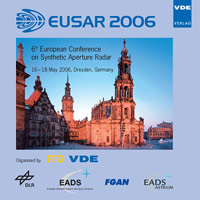Glaciers and Ice Sheets Mapping Orbiter Concept
Conference: EUSAR 2006 - 6th European Conference on Synthetic Aperture Radar
05/16/2006 - 05/18/2006 at Dresden, Germany
Proceedings: EUSAR 2006
Pages: 4Language: englishTyp: PDF
Personal VDE Members are entitled to a 10% discount on this title
Authors:
Jezek, Kenneth (The Ohio State University, USA)
Rodriguez, Ernesto; Freeman, Anthony (Jet Propulsion Laboratory, USA)
Gogineni, Prasad; Allen, Chris (University of Kansas, USA)
Curlander, John; Wu, Xiaoqing (Vexcel Corporation, USA)
Krabill, William (Wallops Flight Facility, USA)
Sonntag, John (E.G&G Corporation, USA)
Abstract:
We describe a concept for a spaceborne radar system designed to measure the surface and basal topography of terrestrial ice sheets and to determine the physical properties of the glacier bed. Our primary objective is to develop this new technology for obtaining spaceborne estimates of the thickness of the polar ice sheets with an ultimate goal of providing essential information to modelers estimating the mass balance of the polar ice sheets and estimating the response of ice sheets to changing climate. Our new technology concept employs VHF and P-band interferometric radars using a novel clutter rejection technique for measuring surface and bottom topographies of polar ice sheets from aircraft and spacecraft. Our approach will enable us to reduce signal contamination from surface clutter, measure the topography of the glacier bed at better than 1 km intervals with an accuracy of 20 m, and paint a picture of variations in bed characteristics. The technology will also have applications for planetary exploration including studies of the Martian ice caps and the icy moons of the outer solar system. Through the concept developed here, we believe that we can image the base and map the 3- dimenional basal topography beneath an ice sheet at up to 5 km depth.


